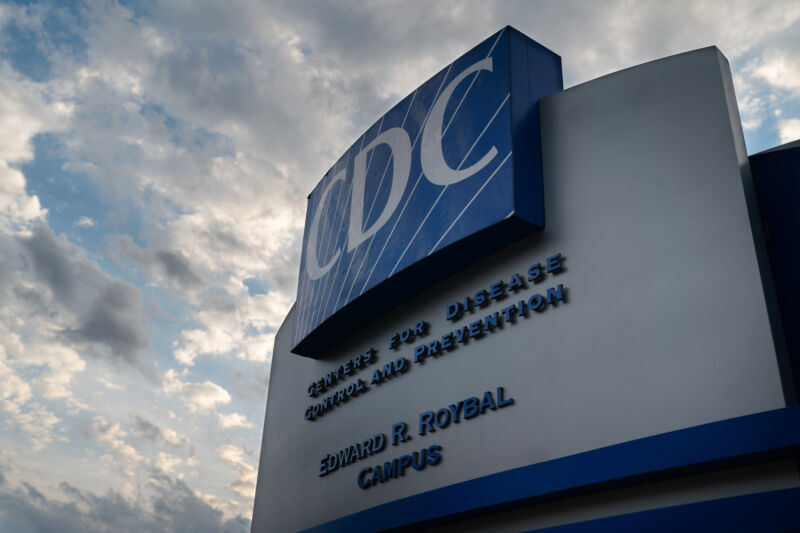considerations —
CDC suggests rallies and other large in-person events are of the highest risk.
Beth Mole
–

Enlarge / Signage outside the Centers for Disease Control and Prevention (CDC) headquarters in Atlanta, Georgia, on Saturday, March 14, 2020.
As states reopen and people begin to ease back into public life, so too is the US Centers for Disease Control and Prevention, it seems.
Today, Friday, June 12, the CDC held its first COVID-19 press conference in just over three months. Though the pandemic has ravaged much of the US in that period, the last time the country’s leading public health agency held a briefing on the crisis was March 9.
In today’s briefing, CDC Director Robert Redfield and CDC Deputy Director of Infectious Diseases Jay Butler introduced two new sets of suggestions for how members of the public can stay safe from the new coronavirus, SARS-CoV-2, as restrictions ease. One set of recommendations relates to prevention measures for people considering resuming normal activities, like going to the post office or a restaurant. The other is a set of “considerations” for events and mass gatherings.
The CDC’s release of safety considerations for mass gathering is notable given that President Trump recently announced he is returning to the campaign trail, starting with a large, in-person campaign rally on June 19 in Tulsa, Oklahoma. Like the CDC’s press briefings, there has not been a Trump rally held since March.
To register for the rally, the campaign is requiring all attendees and guests to “voluntarily assume all risks related to exposure to COVID-19” and agree not to hold any of the organizers “liable for any illness or injury,” as noted by Politico.
According to the CDC’s new guidance, such “large in-person gatherings where it is difficult for individuals to remain spaced at least 6 feet apart and attendees travel from outside the local area” create the highest risk of spreading the disease. The lowest risk events are those that are held virtually.
Risky business
For in-person events, the CDC recommends staff and attendees practice enhanced hygiene measures, stay six feet apart whenever possible, and wear face coverings. Organizers should make efforts to put up physical barriers where possible (such as plexiglass around cash registers), reduce the density of people in enclosed areas, have markings to encourage physical distancing, and modify layouts and seating to reduce contact.
Still, the CDC was careful not to set any requirements. The agency notes at the beginning of the document that it merely “offers the following considerations for enhancing protection of individuals and communities” and that it’s up to event planners and officials to determine “how to implement these considerations, making adjustments to meet the unique needs and circumstances of the local community.” It emphasizes that the considerations “are meant to supplement—not replace” (emphasis theirs) state or local regulations.
This week, Trump moved the August Republican convention from Charlotte, North Carolina to Jacksonville, Florida after refusing to agree to social distancing measures during the gathering, which North Carolina Gov. Roy Cooper insisted on.
In the CDC’s other guidance for members of the public going out, the agency emphasized similar distancing precautions for various activities—from hosting cookouts to going to a nail salon, traveling overnight, or going to the gym. Though it offered some context-specific tips, the recommendations generally caution people to stay six-feet apart, avoid high-touch surfaces and objects, practice hand hygiene, and wear a mask.
“Here’s a general rule of thumb,” Butler said in today’s press conference. “The more closely you interact with others, the longer the interaction lasts, and the greater the number of people involved in the interaction, the higher the risk of COVID-19 spread.”

